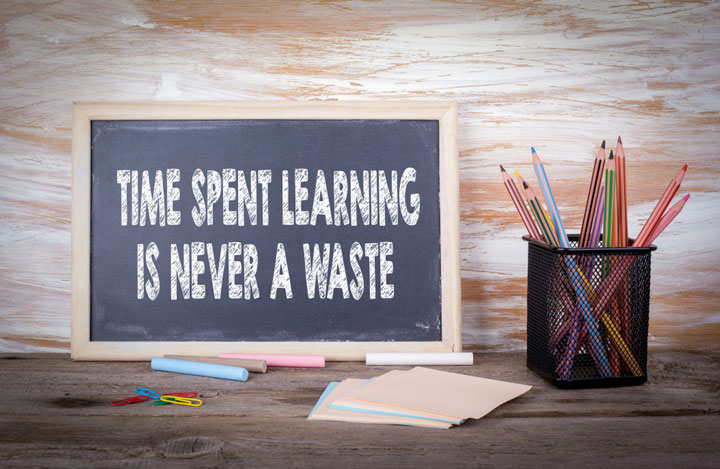A three-phase approach addressed immediate needs and enhanced nurses’ skills and confidence.
Editor’s note: This is an early release of a web exclusive article for the March 2021 issue of American Nurse Journal.
When the first surge of COVID-19 hit in 2020, RWJBarnabas Health in New Jersey, similar to many healthcare facilities, faced an influx of patients and demanding staffing issues. Some areas of New Jersey experienced surges more steadily than others, and predicting where and when the pandemic would peak next proved challenging.
Quickly bolstering nurses’ skills to take care of patients with COVID-19 is vital to addressing the pandemic, as well as future surges and other disasters. The ability to turn on a dime and train and cross-train staff is even more critical in situations like COVID-19, where colleagues also became patients.
During the initial surge, many RWJBarnabas Health units housed patients with COVID-19. As the acuity increased and the operating room (OR) schedule shifted, OR staff supported these units. The education team and the organization’s chief nursing officers determined that enhancing all nurses’ skills through cross-training was key to providing quality care. But how, where, and when would it be possible to offer training to meet the ever-changing needs of 11 hospitals? RWJBarnabas Health broke it down into three phases.
Phase 1: Just in time
By the end of March 2020, many New Jersey healthcare organizations were deeply involved in the COVID-19 pandemic response. At RWJBarnabas Health, unprecedented staffing needs had to be addressed with training in the trenches.
Cross-training in donning and doffing personal protective equipment began in February. Additional education addressed critical skills needed on the spot. For example, hospitals provided 30-minute just-in-time basic skills training that included infection prevention practices. Other sessions of varying length, depending on previous knowledge, experience, and skills of the staff and the number of participants, included training on ventilators, high-flow oxygen, and lethal rhythms. Refreshing basic skills for nurses who hadn’t regularly cared for patients was initiated in several of the system facilities, and perioperative, medical/surgical, and telemetry nurses participated on care teams while receiving different levels of just-in-time training depending on their role and skill set. These efforts increased the number of nurses providing direct care to patients with COVID-19.
The just-in-time training was facilitated primarily by educators who worked side-by-side with staff to ensure they had the support they needed. The educators also acted as resources to non-critical care trained nurses who were assigned to the COVID-19 units. The entire education team was on the units to provide much-needed emotional support in addition to clinical support.
As the number of cases soared, a shift in the training methodology was necessary to provide enough skilled staff to meet the demand quickly.
Phase 2: Expanded training
A period of overlap occurred between training phases, but by the end of March 2020, Phase 2 training began in several system facilities. Phase 2 focused on a more structured approach and included expanded content, such as managing commonly used COVID-19 medications. A mini critical-care course helped support members of the clinical care teams who were modeling a tiered staffing structure. This structure included an interprofessional team with a physician, respiratory therapist, critical care nurse, and med/surg nurse. The tiered staffing structure was influenced by the Society of Critical Care Medicine model. (More information about this model is at sccm.org/Blog/March-2020/United-States-Resource-Availability-for-COVID-19?_zs=jxpjd1&_zl=w9pb6.)
To narrow the knowledge gap among all staff, the education team live-streamed education to sites that were resource-depleted because of ill healthcare workers and educators. Material included mini critical-care course content.
Focus groups
In addition to education and training, focus groups provided nurses with emotional support, someone to listen to their experiences, and potential guidance or assistance as they care for patients with COVID-19, some of whom are colleagues. The focus groups allowed staff time to debrief with a facilitator, providing a safe space to vent and speak freely and confidentially.
Focus groups were held after the first pandemic surge at system teaching and nonteaching hospitals in urban and rural areas. Twenty-four focus groups were held with approximately 15 staff nurses from critical care, medical/surgical units, telemetry, emergency department, obstetrics, and OR. Participants attended one session each.
Focus groups also were instrumental in determining what was working well and identifying opportunities to improve preparation for COVID-19 (and future pandemic and disaster) surges. Topics raised by nurses in the focus groups included the need to be prepared with new or refreshed skills to care for patients with COVID-19. They also recognized the value of the just-in-time training. Suggestions for expansion included continuing classes and using a standardized system-wide approach to increase medical-surgical and telemetry nurses’ skills related to critical care practices and procedures.
Nurses also identified consistency as an important goal and suggested a potential solution to improve quality: a cross-training program. Educators pivoted quickly to formalize the curriculum and include information staff to meet patients’ needs in an unfamiliar care setting.
Phase 3: Cross-training
In Phase 3, RWJBarnabas Health formalized just-in-time training into a pandemic preparedness cross-training program, a cumulative product of the focus groups, recommendations from educators and leaders, and limited information available in existing literature.
The education team faced several challenges, including fear of the unknown while helping nurses upskill. In the focus groups, nurses said that structured education standardized for nurses across the system was essential to build their skill set. Structured education also decreased nurses’ anxiety when they moved to areas with unfamiliar equipment and critically ill patients.
The education teams tailored presentations to the needs staff identified. An interdisciplinary team of educators included specialists from respiratory therapy, pharmacy, and physical therapy.
The cross-training program includes five educational components:
1. ventilator management
2. medication management
3. sedation management
4. cardiac rhythm interpretation
5. clinical time in critical care.
The fifth component focuses on building skills by clinically reinforcing the other components, including spending time in critical care with a preceptor. Time on the unit proved significant because it provided nurses with the opportunity to perform skills with guidance and to enhance muscle memory for skills learned in class. Familiarity with the layout of the unit, equipment and supply location, and key personnel also proved invaluable. (See Education tips.)
Education tips
Use these tips when to develop an education program for disaster response cross-training.
• Apply what was learned from dealing with uncertainty. For example, whether we know how a virus or disease is transmitted, we know the basics, such as hand hygiene being paramount to infection prevention. We take control by using what we know and applying it to any situation, rather than focusing on the unknowns.
• Give nurses power over their own skills and support them to realize that they know what to do and can adapt their previous training to fit the current situation.
• Acknowledge and address fear of the many unknowns in novel, disaster situations so training can be accessed.
• Help nurses comprehend the context of their knowledge so they can place what’s known into the current situation, evaluate existing competency, and identify and fill the gaps in training so any situation can be managed confidently and efficiently.
Strategies for success
Several factors have contributed to the program’s success. The acquired skill sets effectively assessed and tracked resources. Alternate plans, supplementary education, and cross-training overcame the limitations of cross-training during a high-volume emergency, such as a mass casualty or epidemic. (See Staff respond.)
Staff respond
To date, over 350 nurses have participated in the RWJBarnabas Health pandemic preparedness cross-training program, and the education process continues. Each facility maintains a competency grid that lists the nurse’s name and the five cross-training components, including the clinical time spent in critical care, with completion dates. Tracking and trending which nurses have completed each content area and clinical time is challenging, but worthwhile.
Verbal and written staff feedback about the program has been positive.
• “After the initial quick review with just-in-time training, I knew what I was doing, but I didn’t know why. The pandemic preparedness cross-training helped me move from increasing my knowledge to knowing why we do the things we do, in addition to assisting me to become more adaptable.”
• “The pandemic preparedness cross-training was invaluable. The combination of visual and kinetic learning while learning the rationale is an important aspect of this training. I was more prepared, and less anxious, which gave me the ability to focus on the patient. As my competency was enhanced, my confidence increased.”
Facility and unit orientations ensure these nurses are acclimated to the assigned environment. They bridge gaps in staffing and collaborate with the regular critical-care staff, as well as the cross-trained staff and agency nurses. For the future, a plan for a system-wide float pool is being advanced.
Lessons learned, planning for the future
As well-trained professionals, nurses already have much of the knowledge needed to adapt to and handle any situation. However, recognizing how to integrate past learning into novel scenarios is essential. Creating an easily adaptable, modular training that supports nurses to build on previous skills is the most effective approach to developing our program.
Cross-trained staff require support from preceptors, educators, and leaders. Training should focus on cross-training needs, but comfort on a new unit (provided through unit-specific orientation) is as important as developing a new skill set.
Healthcare organizations also must expect unpredictability when planning a disaster preparedness education program. Initially, pandemics and disasters have many unknowns. The solution is to find the best options for training and skill building, with multiple alternatives. This approach will help address issues with unidentified or unknown factors. Responding in an effective and timely manner with resource re-allocation, cross-training, float pools, and tiered care models proved excellent solutions for RWJBarnabas Health.
To prepare for a future pandemic or disaster, RWJBarnabas Health has mandated cross-training refresher sessions paired with shadowing in the critical-care unit. The more repetition and hands-on learning provided for staff, the better prepared they’ll be for other events. The key is to continually refresh training programs and maintain competency, even when the pandemic subsides.
Dynamic thinking before and during disasters is critical. This includes regularly assessing past successes and failures, and identifying, developing, implementing, and evaluating disaster response improvements. In the end, the nursing profession will benefit from the challenges of the COVID-19 pandemic. Lessons learned in adapting to the unknown through education will apply to any future unthinkable situation.
The authors work at RWJBarnabas Health in West Orange, New Jersey. Mary Beth Russell is vice president of the Center for Professional Development, Innovation & Research. Nancy Holecek is senior vice president and chief nursing officer for the Northern Region. Lori Colineri is senior vice president and chief nursing officer for the Southern Region.



















1 Comment.
Thank you. It has increased my knowledge of disaster preparedness and management.